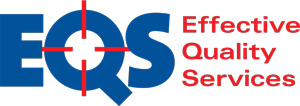Preparing for an FDA or USDA audit can feel overwhelming, especially for mid-sized food businesses that often balance tight budgets, growing customer demands, and increasing regulatory requirements. Whether you are a food manufacturer, processor, or distributor, a successful audit can protect your brand, ensure compliance, and build trust with your customers. The good news is that preparation is possible with the right strategy, tools, and support.
This guide will walk through the key steps mid-sized food businesses should take to prepare, focusing on practical measures that align with FDA and USDA expectations.
Why Audit Preparation Matters
Regulatory agencies like the Food and Drug Administration (FDA) and the U.S. Department of Agriculture (USDA) conduct inspections to confirm that companies are following safety standards and protecting the food supply. For a mid-sized business, failing an audit can mean more than fines or corrective action. It can lead to supply chain disruptions, lost contracts, or even product recalls that damage consumer trust.
That is why FDA audit preparation food industry strategies are essential. Taking a proactive approach allows businesses to identify risks early and demonstrate to inspectors that they are serious about compliance.
Step 1: Understand the Scope of the Audit
The first step is knowing what regulators will evaluate. Many business owners ask, “How can my food business prepare for an FDA audit?” The answer starts with understanding that FDA inspectors typically look for compliance with the Food Safety Modernization Act (FSMA), Hazard Analysis and Critical Control Points (HACCP) requirements, and documentation supporting your food safety plan.
On the USDA side, particularly in meat, poultry, and egg product facilities, inspections focus on sanitation, labeling, hazard controls, and adherence to the USDA inspection compliance checklist. Inspectors are thorough and will expect not just written plans, but evidence that those plans are actively implemented.
Step 2: Keep Documentation Audit-Ready
Documentation is the foundation of every successful audit. Mid-sized businesses often struggle because they have systems in place, but records are scattered or outdated. To prepare:
- Maintain current food safety plans (HACCP, HARPC, or preventive controls).
- Keep logs of sanitation schedules, pest control, and maintenance.
- Store supplier verification records and Certificates of Analysis (COAs).
- Record employee training on food safety and sanitation procedures.
When documentation is well-organized, it saves time and reduces stress during an audit. It also shows inspectors that compliance is built into daily operations.
Step 3: Train Employees on Audit Readiness
Your employees are on the front line of any inspection. USDA and FDA inspectors often ask line workers questions, observe sanitation practices, and check for proper handling of food. That is why ongoing employee training is critical.
Mid-sized businesses should schedule regular training sessions and mock audits to test readiness. Simple refreshers on sanitation, labeling, and safety protocols ensure employees are confident if approached by an inspector.
Step 4: Conduct Mock Audits
One of the best ways to prepare is by simulating the real thing. A food safety audit support for manufacturers program can help identify gaps before an inspector arrives. Mock audits review documentation, walk through facilities, and provide a detailed corrective action plan.
These proactive steps reduce surprises, highlight areas for improvement, and give managers confidence going into the actual inspection. Many businesses find it valuable to engage third-party audit preparation consulting services, which bring outside expertise and an objective eye.
Step 5: Focus on Facility Cleanliness and Sanitation
It may sound basic, but inspectors often cite facilities for poor housekeeping or incomplete sanitation logs. Before an audit:
- Ensure floors, walls, and equipment are clean and free from residue.
- Verify pest control traps are properly placed and recorded.
- Confirm cleaning schedules are followed and logged.
- Check that handwashing stations are supplied and functioning.
Good sanitation demonstrates a culture of food safety and sets a positive tone for the inspection.
Step 6: Address Common USDA and FDA Inspection Questions
Many business leaders wonder, “What do USDA inspectors look for in small food companies?” The most common areas include:
- HACCP plan implementation and monitoring.
- Sanitation Standard Operating Procedures (SSOPs).
- Label accuracy and regulatory compliance.
- Employee hygiene practices.
- Corrective actions for previous findings.
FDA inspectors will often ask for proof that your company has evaluated hazards, trained staff, and documented preventive controls. Anticipating these questions helps reduce stress during the visit.
Step 7: Build a Long-Term Compliance Strategy
An audit should not be viewed as a one-time event but as part of your ongoing food safety system. Mid-sized businesses that treat compliance as continuous improvement often perform better and spend less time scrambling before inspections.
Develop a compliance calendar that includes internal audits, employee refreshers, and supplier verifications. Partnering with experts who specialize in food safety audits can also give your team added assurance. As many companies discover, the answer to “Who can help me get ready for a food safety audit?” often lies in seeking out experienced consultants who know what regulators expect.
For mid-sized food businesses, preparation is the key to confidence during FDA and USDA inspections. From documentation and training to mock audits and sanitation, every step builds resilience and reduces risk. While compliance requires effort, it ultimately strengthens your brand and ensures customer trust.
Effective Quality Services works with food manufacturers, processors, and distributors to prepare for audits with hands-on support, training, and consulting. Whether you need a mock audit, documentation review, or ongoing compliance guidance, we are here to help.
Contact us today to get started on your audit preparation journey.

